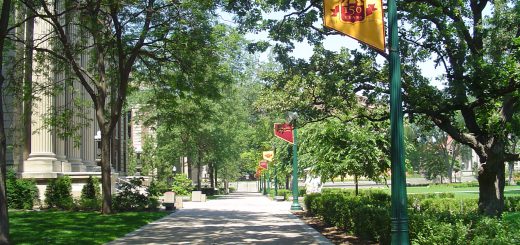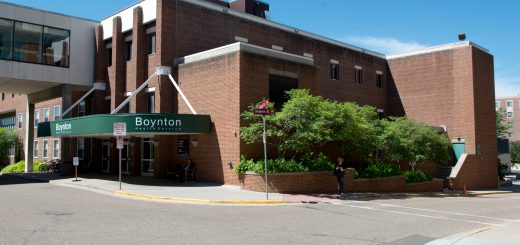Where online is the norm
The Crookston campuses’ many online degrees — appealing to nontraditional students — made campus shutdown relatively easy.
By Yves De Jesus
The University of Minnesota’s Twin Cities campus faced an unprecedented change last month when all classes moved from in-person to online because of the coronavirus pandemic.
But for the Crookston campus, that transition was a comparative snap: That’s because a little more than half its students were already in online-only programs.
The small campus in northern Minnesota, with about 1,900 students, has positioned itself as a leader in online learning.
Two decades ago, the campus awarded its first bachelor’s degree completed entirely online. In subsequent years, Crookston has continued to add more online degree programs, and now offers 15 bachelor’s degree programs, from accounting to health management.
By contrast, the Twin Cities campus offers nine online-only degree programs —none for an undergraduate degree.
Most of Crookston’s programs cater to “atypical college students” — those who are older, with full-time jobs, who may be caring for dependents or other family members.
The median age of Crookston’s online students is 33, and these students take an average of about nine credits a semester. Most work full time — 77%, in fact, according to a fall 2019 survey of online students.
“We’ll have students on both ends of the spectrum — younger into their careers or older managing a whole [company]…but they don’t have their … baccalaureate education,” said Mark Huglen, a professor of communication who led a team effort in 2011 to open a completely-online version of Crookston’s bachelor of science in communication degree.
A perfect solution

That online program was perfect for Dustin Petersen, a technical writer for a manufacturing company who wanted to broaden his skill set and perspective with a degree after a 20-year gap.
“I had wanted to go back to school, but I didn’t really have the opportunity because I worked full- time,” he said.
He couldn’t quit his job and didn’t qualify for financial aid. The Crookston online option offered him an affordable and well-paced way to accomplish his goal, he said. He graduated last May with his online-earned bachelor’s degree.
“I’d study for three or four hours a night during the week and like eight hours on Saturday and maybe another six on Sunday,” Petersen said.
He said the technology of online learning has allowed for greater access to higher education to distance learners like himself.
“Whether it’s age or their schedule or where they live, online education has opened doors to a lot of people who otherwise might not have had that opportunity,” Petersen said.
Online-only degree programs are often good for atypical or nontraditional students because they allow flexibility for assignment submission and lecture attendance, said communication professor Huglen.
“In the online environment, it’s asynchronous,” he said. Students submit their work in different hours of the day, or over the weekend due to their strict work schedules. Because of that, professors must have greater flexibility with time, and students are asked to respect timely responses.
But those online options are not good for all students, he said.
“You have to be responsible and dedicated,” Huglen said. “You have to be very disciplined to keep going to school even though you’re out in the world, you’re doing your job—you don’t have other students around you.”
COVID-19 pushes system
The COVID-19 closures have prompted online changes which might permanently change the direction of such offerings across the UMN system.
On the Twin Cities campus, hundreds of academic technologists and instructional designers have stepped up during the past few weeks in a tremendous push to help faculty adjust to the new online learning environment — something never tried before on this scale.
The Twin Cities campus has already canceled summer in-person classes. In a memo on April 9, President Joan Gabel has said planning for fall classes in-person classes is occurring at the same time the university is “considering high-quality and engaging ways we could offer a world-
class education and experience if a return to campuses in the fall is not possible—with several alternatives in between.”
Bob Rubinyi, a senior analyst at the Center for Educational Innovation on the Twin Cities campus, said one goal is to help faculty find appropriate technology matching the live experience of a course. The best educational pedagogy may not be Zoom lectures but smaller video materials offered asynchronously.
Rubinyi and his colleagues at the Center have spent time developing self-instructional guides for faculty and staff — “something that faculty can go through to learn about good practices for doing online design and teaching,” he said.
Meanwhile at Crookston, a strong base for expanding online instruction campus-wide has made the transition easy thanks to ample use of Canvas and other resources to support online instructional delivery, said Mary Holz-Clause, chancellor of the Crookston campus. Its Academic Technology Support Services, for example, routinely helps faculty review the best practices for designing and delivering an online course.
“They are good instructional designers who are there to help,” Holtz-Clause said. “That’s their job and they understand how to use that.”



